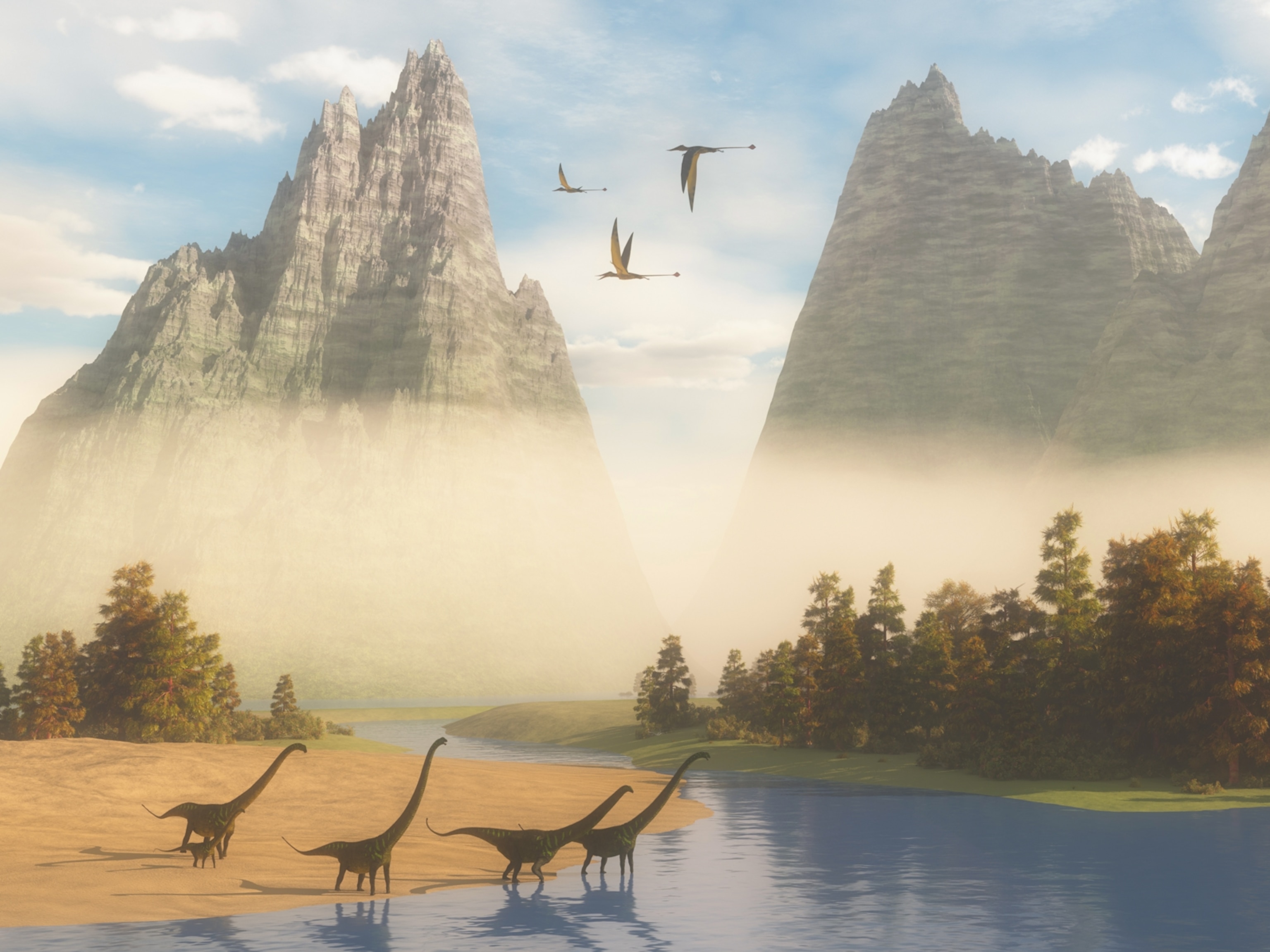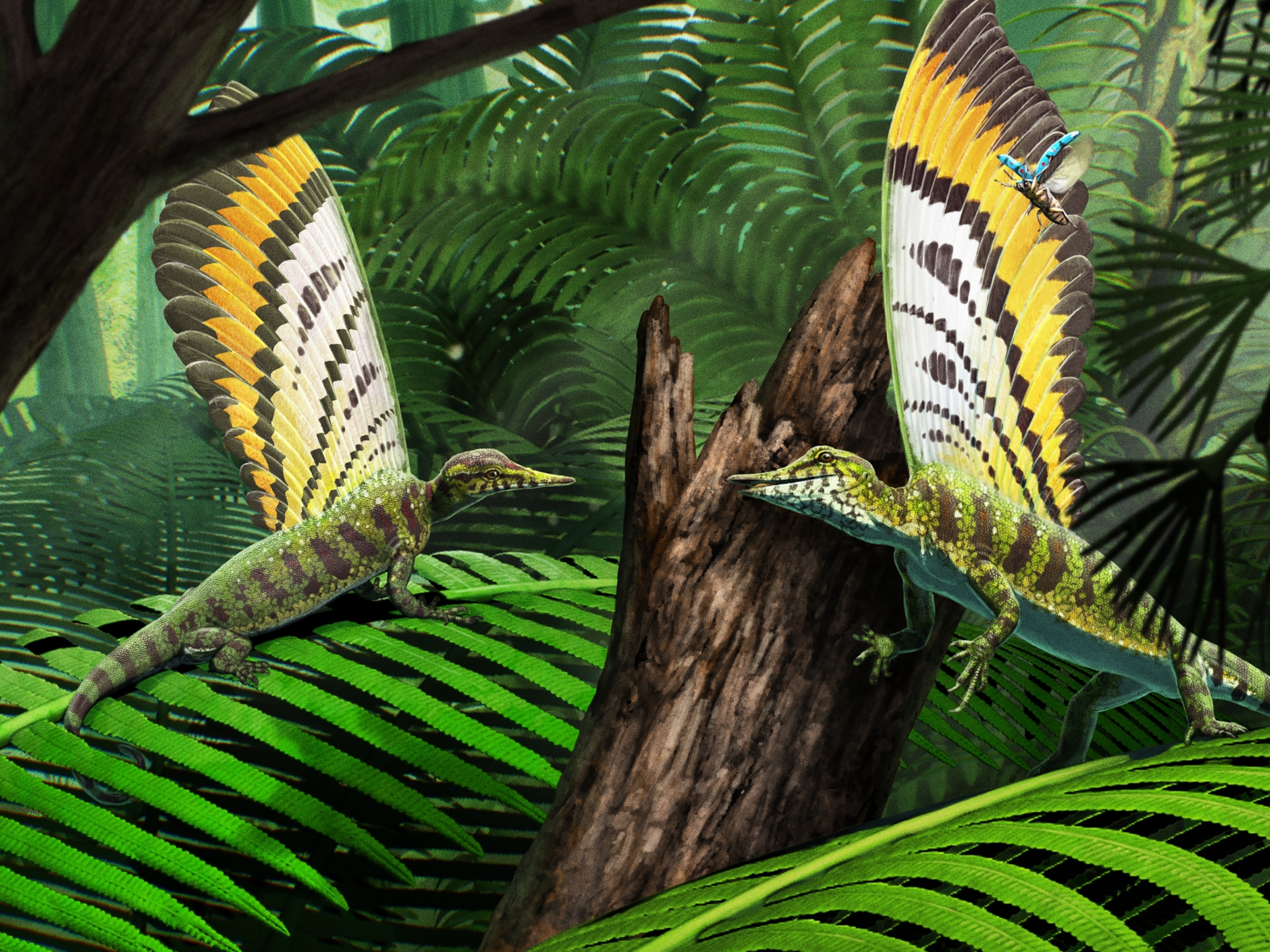
New Candidate for World's First Bird
Discovery of the feathered Aurornis stokes the debate over the first avian.
For over a century and a half, the prehistoric Archaeopteryx has been celebrated as nature's earliest bird.
The iconic Jurassic creature was covered in feathers yet retained the teeth, claws, and bony tail from its dinosaurian ancestry, known from at least 11 specimens that have been chipped from limestone quarries in Germany. (Related: “Feathered Dinosaur Had Black Wings?”)
But was Archaeopteryx truly an early bird, or just one of many sorts of plumage-coated, non-avian dinosaurs? An archaic bird known as Aurornis xui, described this week in the journal Nature by paleontologist Pascal Godefroit and colleagues, is the latest entry in the debate over which animal qualifies as the first bird and how birds evolved.
The delicately preserved specimen, which includes fossil remnants of feathers, was discovered in the roughly 160-million-year-old rock of China's Tiaojishan Formation. While Aurornis lived about ten million years earlier than Archaeopteryx, and very far from the prehistoric European archipelago that Archaeopteryx inhabited, the new study found that the two plumage-covered creatures were close relatives at the very base of bird evolution.
"It's among the earliest birds, being it's both older and apparently less 'birdlike' than Archaeopteryx along the 'bird branch,'" says study co-author Andrea Cau of Italy's Museo Geologico.
Bird Fights
The close ancestral proximity described in the new paper runs counter to another Nature study, published two years ago, which argued that Archaeopteryx and related dinosaurs were further removed from bird ancestry.
In 2011, paleontologist Xing Xu and colleagues described a similar feathery dinosaur, found in the same formation, that they named Xiaotingia zhengi. This animal also appeared to be a close relative of Archaeopteryx.
But there was a twist in that study: The researchers theorized that Archaeopteryx, Xiaotingia, and yet another similar animal called Anchiornis actually fell outside the bird line and were closer to a branch of non-bird dinosaurs called deinonychosaurs.
That group includes feathery, switchblade-clawed dinosaurs such as Velociraptor and Troodon.
Feathers alone don't make a bird, and the rapid discovery of so many birdlike dinosaurs has spurred debate over how to distinguish between the creatures that truly were early birds and those that merely look like good candidates for archaic avians.
So maybe Archaeopteryx was not an early bird, after all. More than that, Xu and collaborators proposed, maybe the first birds weren't descendents of the deinonychosaurs—as has often been suggested—but instead evolved from poorly known dinosaurs similar to the bucktoothed Epidexipteryx.
Any evolutionary tree is a hypothesis that can change with new evidence and investigation. No wonder, then, that not everyone agreed with the tree that Xu and colleagues proposed.
A quick response using different methods, by Michael Lee and Trevor Worthy, reaffirmed the status of Archaeopteryx as an archaic bird. The new Aurornis paper supports this hypothesis, even as it introduces Aurornis as a candidate for an even older bird.
What's a Bird, Anyway?
The problem for Archaeopteryx, Aurornis, and their relatives, says University of Maryland paleontologist Thomas Holtz, Jr., is that "by being so primitive there is no definite way to place them as stem-birds, stem-deinonychosaurs," or members of another group.
The animals are so close to the base of their lineages that it's difficult to tell exactly where they fit.
Natural History Museum of Los Angeles paleontologist Luis Chiappe agrees, noting that Aurornis is close to bird ancestry but may not actually fall within the actual bird group defined by the last common ancestor of Archaeopteryx and modern birds.
"The problem we are facing these days is that all these animals are anatomically very similar, and our definition of birds—arbitrary as it is—sets a line between what is and what isn't called a bird," Chiappe says.
The sheer number of feathery fossils complicates matters further.
"What the trees—and the new fossils—are telling us is that back in the Jurassic, 150 to 160 million years ago, many different types of dinosaurs were experimenting with 'birdness,'" Chiappe notes. "And it is from this 'birdness soup' that true birds originated."
As frustrating as the identities of Aurornis, Anchiornis, Archaeopteryx, Xiaotingia, Eosinopteryx, and other birdlike dinosaurs are to draw out, the confusion has made a positive contribution to paleontology: The explosion of feathered dinosaur finds and research has left no doubt that birds are dinosaurs.
While Holtz expects that Archaeopteryx, Aurornis, and their relatives "are going to bop back and forth in the early positions on the tree" in future studies, he says that "in the end, it doesn't matter which ones are stem-deinonychosaurs and which stem-birds. Together they show us that the ancestors of pigeons and Velociraptor were small, probably flying, animals that look like these."
Still, figuring out the early bird evolutionary tree does matter in coming up with expectations about how the first avians evolved, particularly the origin of flight. Which one deserves the title of "First Bird," and how that find will shape our understanding of one of the most magnificent evolutionary transformations of all time, will be investigated and debated for many years to come.





